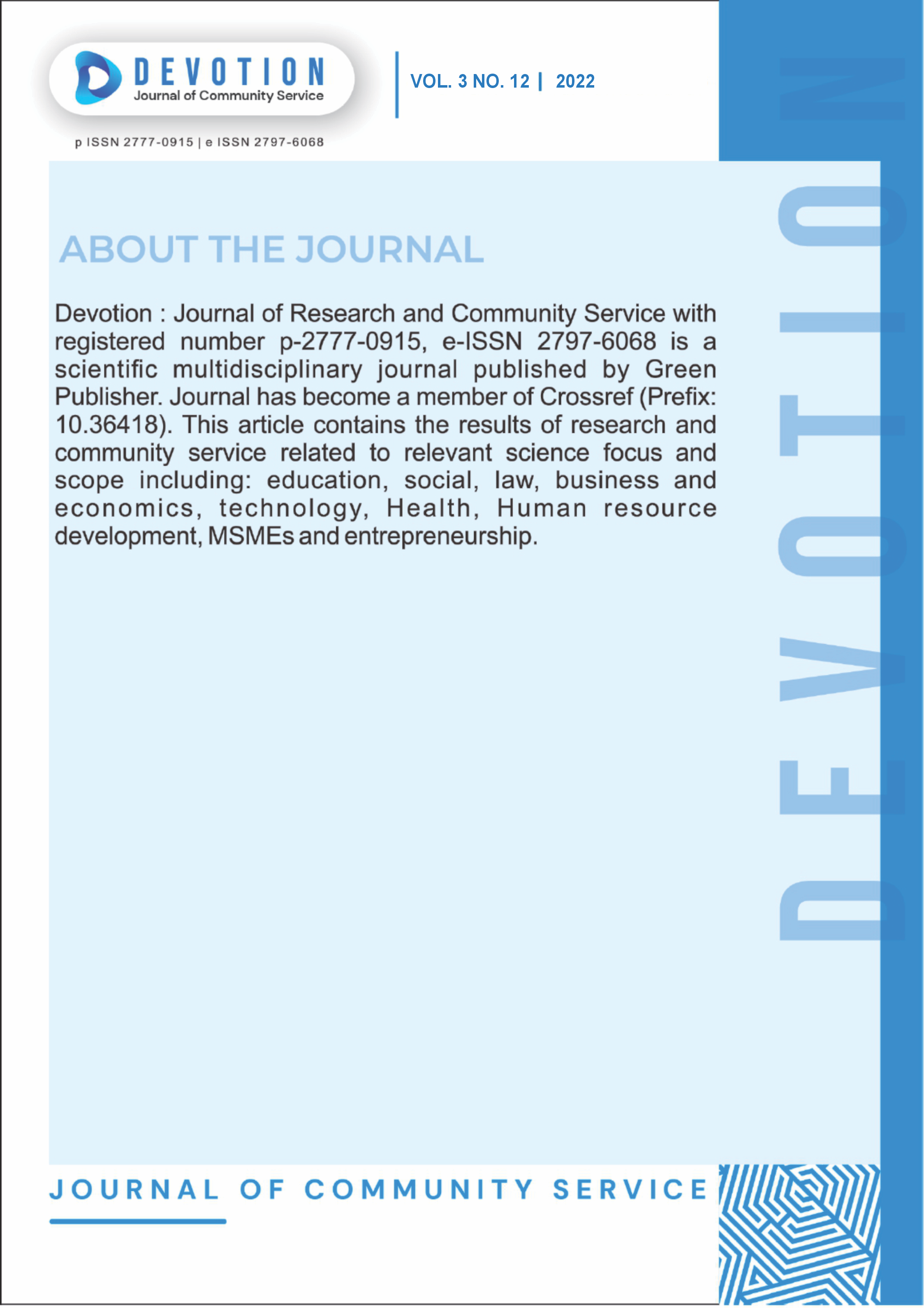Changes In Physical and Chemical Properties of Peat In Various Ages of Oil Palm Plant In East Kotawaringin District
DOI:
https://doi.org/10.36418/dev.v3i12.234Abstract
The purpose of this study was to examine changes in the physical and chemical properties of natural peat forests and peatlands designated for oil palm plantations at various ages of oil palm planting. The research was carried out in 4 (four) locations in East Kotawaringin Regency, namely: (1) Natural peat swamp forest in Kota Besi District (2) Peat land designated for oil palm plantations planting age less than 4 years in Parenggean District; (3) Peat land designated for oil palm plantations with a planting age of 4-10 years in Cempaga District; and (4) peat land designated for oil palm plantations with a planting age of more than 10 years in Mentawa Baru District, Ketapang. The results showed that the peat land designated for oil palm plantations caused changes in the physical and chemical properties of the peat soil. Changes in the physical properties of peat soil are indicated by the color of the peat soil which changes from very dull red in natural peat forests to reddish black in oil palm plantations. Peat maturity changes from fibric in natural peat forest to hemic and sapric on peatland designated for oil palm plantations. The water content has decreased significantly, the older the age of the oil palm plant, the water content will decrease. In terms of bulk density, the older the age of oil palm plantations, the higher the density of peat soils. The water level in oil palm plantations has increased when compared to natural peat forests. Changes in chemical properties were indicated by an increase in peat soil pH, total N, and available P, while a decrease occurred in the C-Organic content. An increase also occurred in the content of K-dd, Ca-dd, Mg-dd, Na-dd, and CEC with increasing age of oil palm plants. When viewed from the relationship pattern of each physical characteristic, water content has a positive relationship with fiber content, the higher the water content will be followed by the higher fiber content or vice versa. Bulk density has a negative relationship with fiber content and moisture content, which means that an increase in the bulk density of peat soil will be followed by a decrease in fiber content and moisture content. The relationship pattern of chemical properties shows that the pH (H2O) of peat soil has a positive relationship with organic C, total N, available P, and Cation Exchange Capacity (CEC). High or low peat acidity will be proportional to the high or low -organic, N-total, P-available, and Cation Exchange Capacity (CEC).
Published
Issue
Section
License
Copyright (c) 2022 Reni Rahmawati, Penyang Penyang, Eritha K. Firdara, Yusintha T, Rosdiana Rosdiana, Milad M

This work is licensed under a Creative Commons Attribution-ShareAlike 4.0 International License.
Authors who publish with this journal agree to the following terms:
- Authors retain copyright and grant the journal right of first publication with the work simultaneously licensed under a Creative Commons Attribution-ShareAlike 4.0 International. that allows others to share the work with an acknowledgement of the work's authorship and initial publication in this journal.
- Authors are able to enter into separate, additional contractual arrangements for the non-exclusive distribution of the journal's published version of the work (e.g., post it to an institutional repository or publish it in a book), with an acknowledgement of its initial publication in this journal.
- Authors are permitted and encouraged to post their work online (e.g., in institutional repositories or on their website) prior to and during the submission process, as it can lead to productive exchanges, as well as earlier and greater citation of published work.













